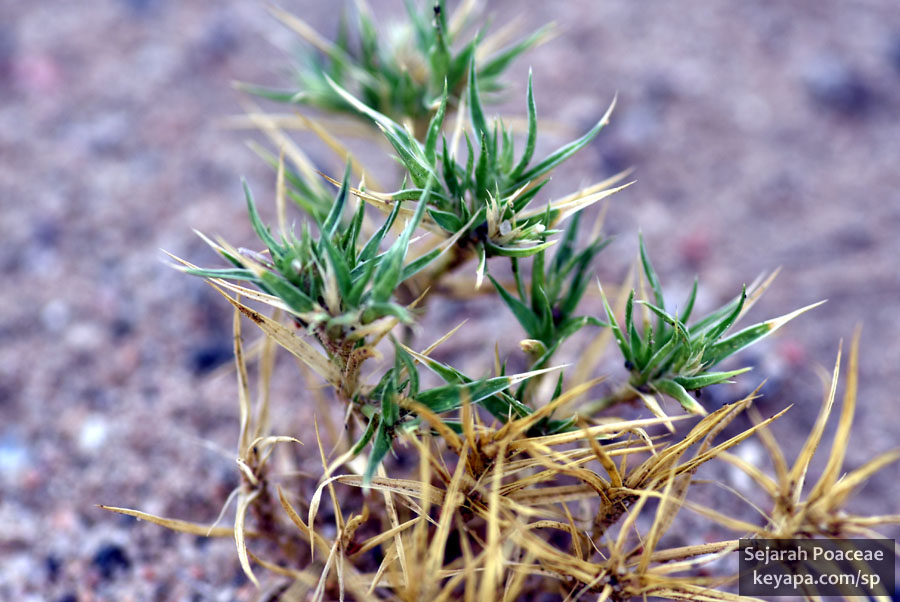
Important: Unfortunately, due to damage to my flash during the hike at the Sherpa Steps or Nordkapptrappa (North Cape Staircase), in Honningsvåg, macrophotographs taken were of subpar quality.
Thanks to Tom Chester, who noted that what I mentioned might be salt on a specimen, was actually a sand grain.
I was excited about the trip to Colorado not only because of the prime hiking opportunities (plus I really like the state), but because it would give me a chance to botanize for one of the sclero grasses which I posted about a few weeks back.
For most of the time, we stayed up in the chilly mountains, but we finally descended to the Denver area near the end of the trip.
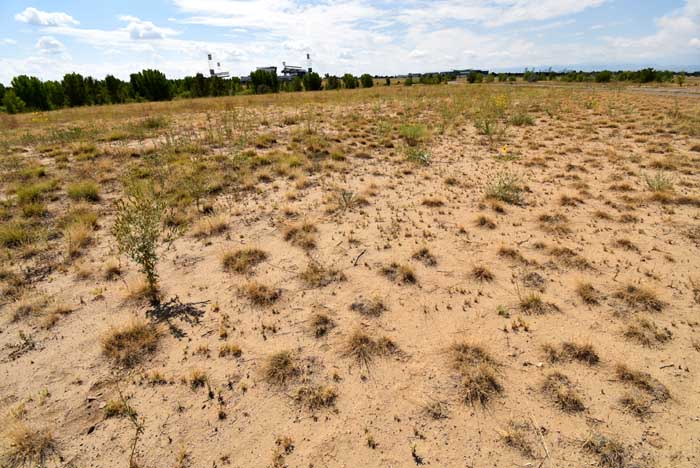
The moment we got to our hotel in the late afternoon, I prepared to venture out in search of the sclero Munroa squarrosa, which according to iNaturalist was present in the surrounding area. The species was not exactly rare, but neither did it seem to be widespread. There are only 500 or so observations of it from the entire world.
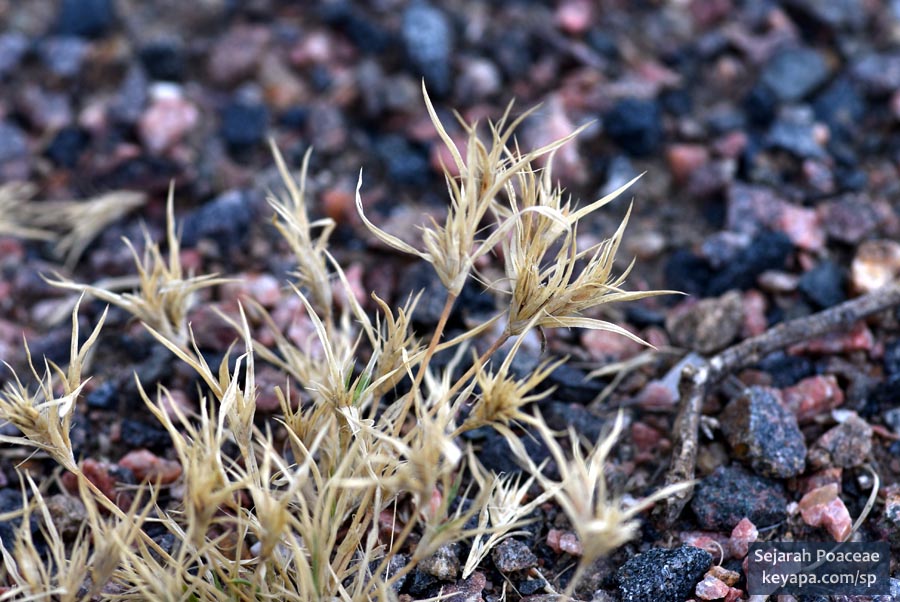
I drove to a nearby hunting ground, which happened to be at Prairie Gateway Open Space (as an aside, one thing I really love about the Denver area is their slavish obsession with creating open spaces), and parked my rental car.
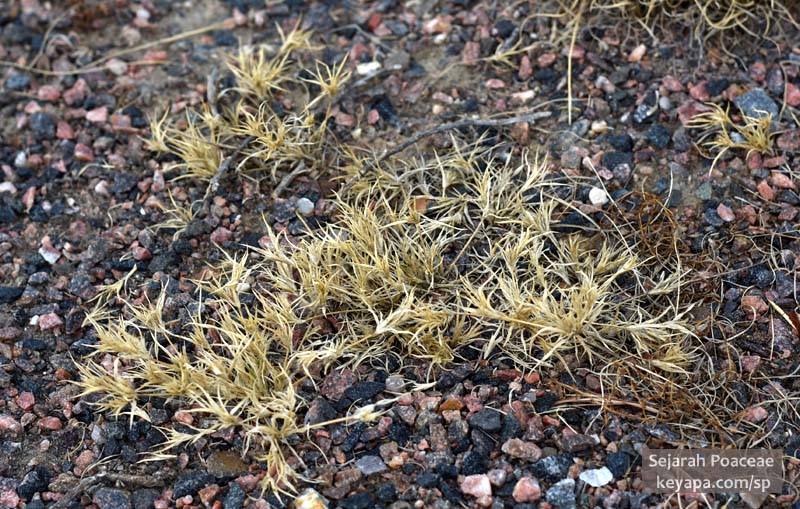
I then ventured out along the paved path, my eyes scanning the nearby grounds. I had never seen the species before in person so I actually had no idea what it would look like from human eye level. Herbaceous plants, both browned and green-leaved dotted the landscape in a bewildering mass, and I resigned myself to a long hot afternoon that might or might not yield success by the time the sun dropped below the horizon.
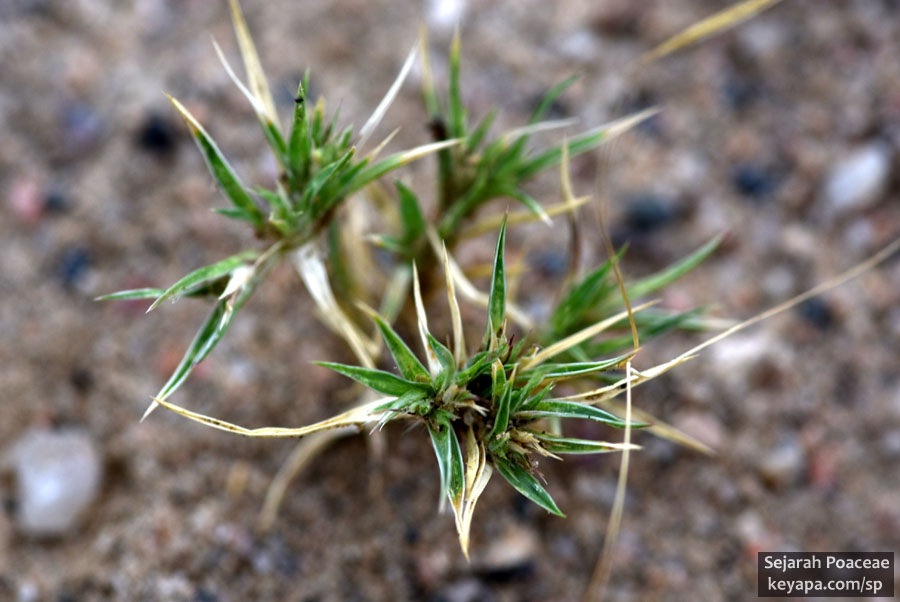
But serendipity and luck were on my side, and when I stopped and stooped down to tie a loose shoelace, I suddenly noticed a really small plant that was almost right next to me, and that looked quite prickly and lay flat to the ground. It was all dried up, but my mind lit up because I realized that it looked like a brown version of the images I had seen of M. squarrosa on the internet!
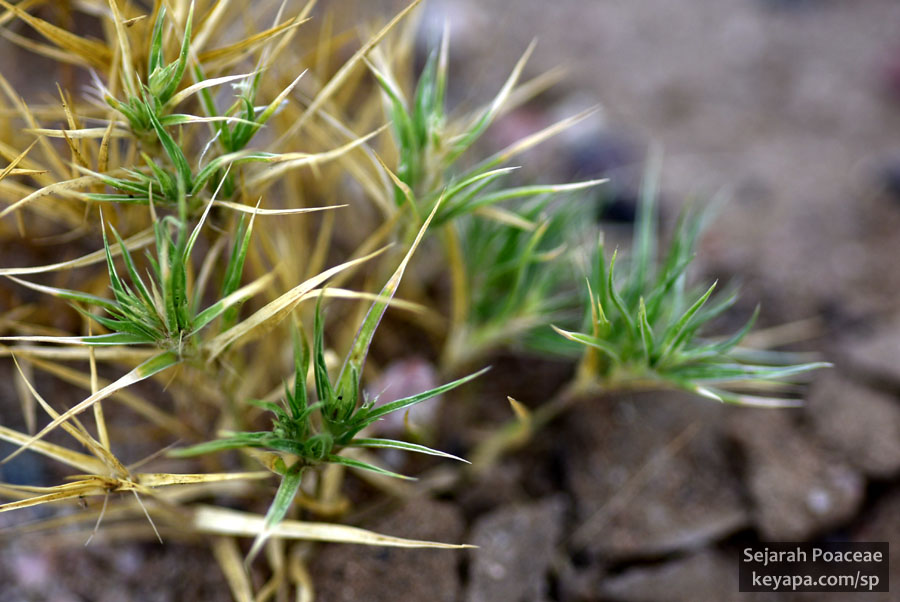
Careful examination of the specimen and a quick upload to iNaturalist confirmed the identification, and I then realized that the immediate area had more dried examples of the species. But the remarkable thing was that I had only ventured out perhaps 50 m away from the parking lot. In fact, I could still see my car in the distance!
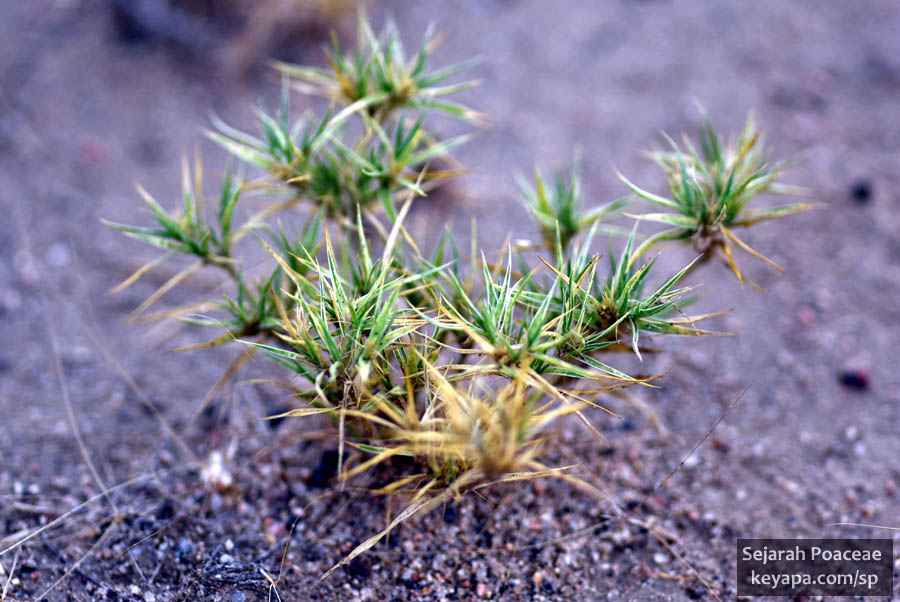
After taking macros of the dried specimens, I ventured out of the paved walkway and took a few steps into the interior, where I finally found many specimens of M. squarrosa. They were all quite small and low to the ground, which means that they might not do well when dropped into the midst of taller plants. But they all had a distinctive spiky, sharp-edged appearance, and I quickly developed a search image of the species such that I could be standing up or walking and still spot tiny specimens on the ground.
This ability to quickly spot and identify species at a distance is very useful, and one that I think all biologists develop (more or less) after becoming familiar with an organism. For example, I can even spot clusters of Imperata cylindrica (locally known as cogon grass) from a very fast moving car because of my familiarity with the species,
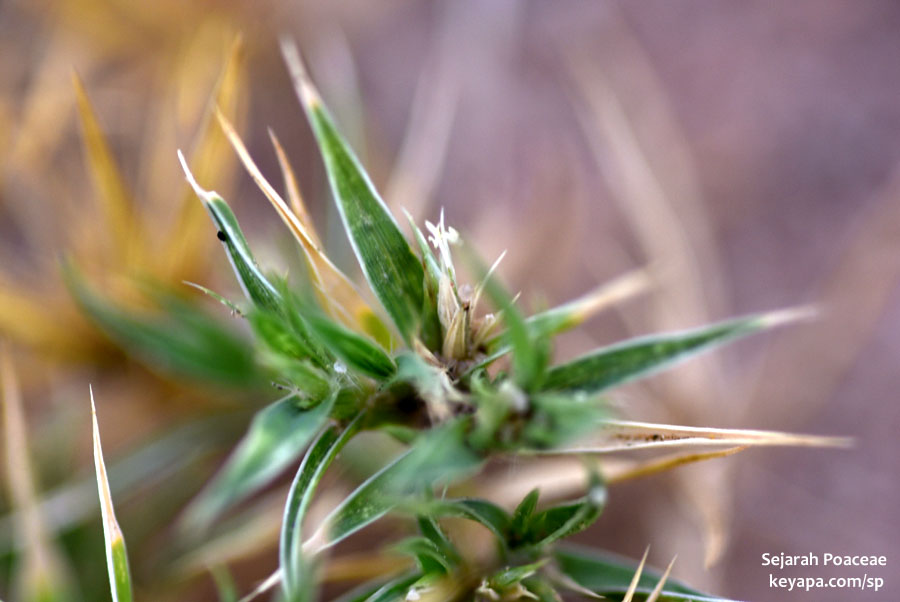
I have to admit I fell for the little critters, as I thought I would. I have a distinct liking for weird tiny relatively rare plants, and the scleros mostly fit into that category.
Interestingly, I noticed that some of the greener specimens had spikelets at the very tips of their culms, although they did not seem like the usual grass inflorescence. They were slightly hidden within the folds of the surrounding protective leaves, and I again was sorry my macro getup was not optimal.
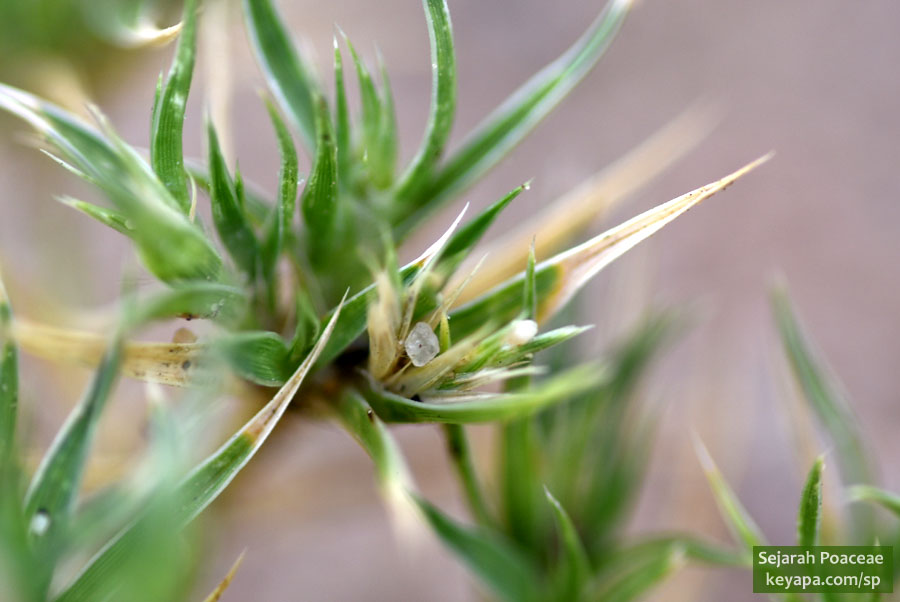
I also noticed that some of the leaves had cube-like crystals seemingly scattered between their leaves, which at first I thought were sand grains from the surroundings. But I also realized they might be salt crystals, and that M. squarrosa might be exuding these crystals from specialized salt glands on their leaf surfaces, although I don’t think I’ve seen reports of that anywhere. Note: I was later corrected by Tom Chester from iNat, and it seems this really was a sand grain.
I walked farther into the open area, but nowhere else did I see the same concentration of M. squarrosa that I discovered near the start of my walk. The next day, I visited the Plains Conservation Center in Aurora, which boasted a much denser ground flora (including what looked to be Bromus tectorum – aka, cheatgrass). But besides a few scattered specimens that were somewhat isolated from the main brush, I did not see much M. squarrosa.
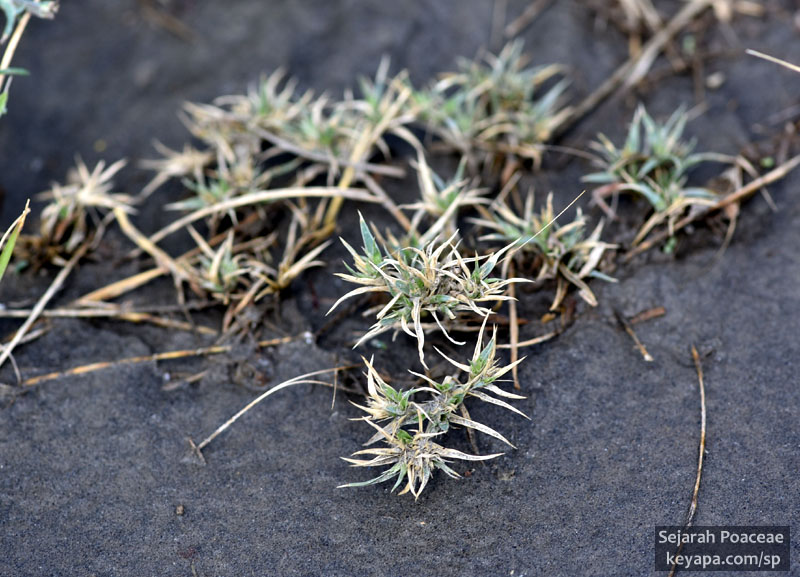
Perhaps the short grass had been proliferating beneath the flourishing ground cover, easily hidden by the taller plants around it. But I’d also like to think that luck had been on my side that first day, and that serendipity had graced my first botanizing expedition with its welcoming presence.
As an aside, none of the specimens I saw were hairy. The hairiness of M. squarrosa is due to the presence of trichomes, which are outgrowths that may help protect the plant from strong sunlight, in addition to creating a moist micro-environment in arid conditions. My guess is that it was already September, and such defenses are more likely to be found during the heat of mid-Summer in that area.

Leave a Reply